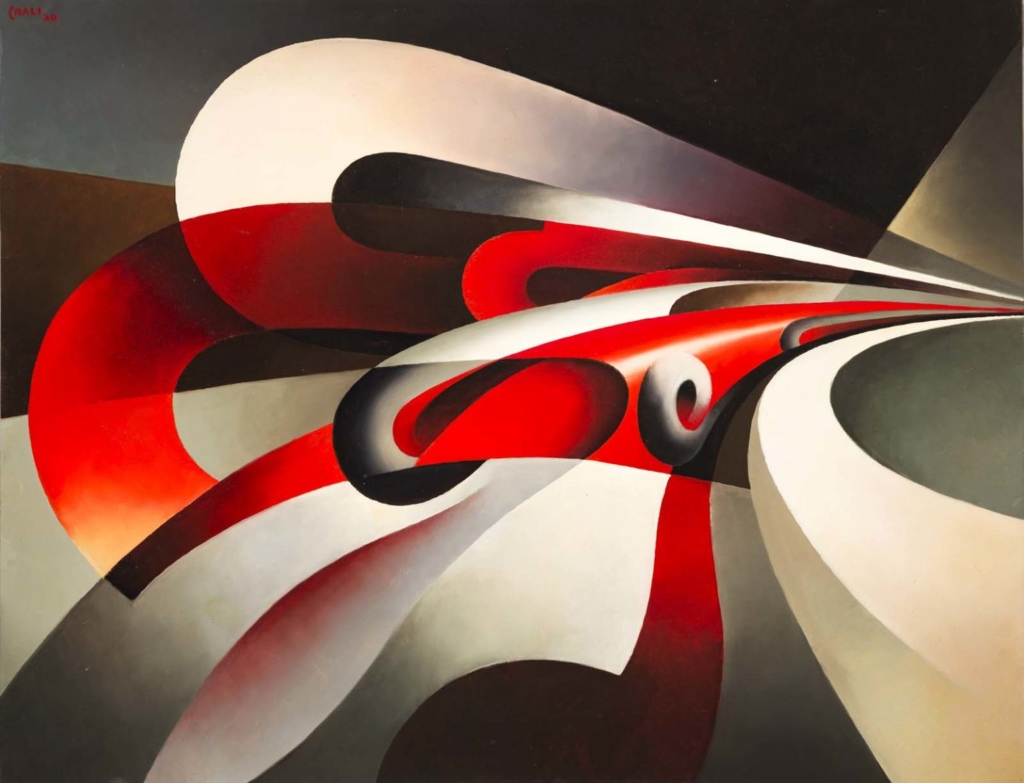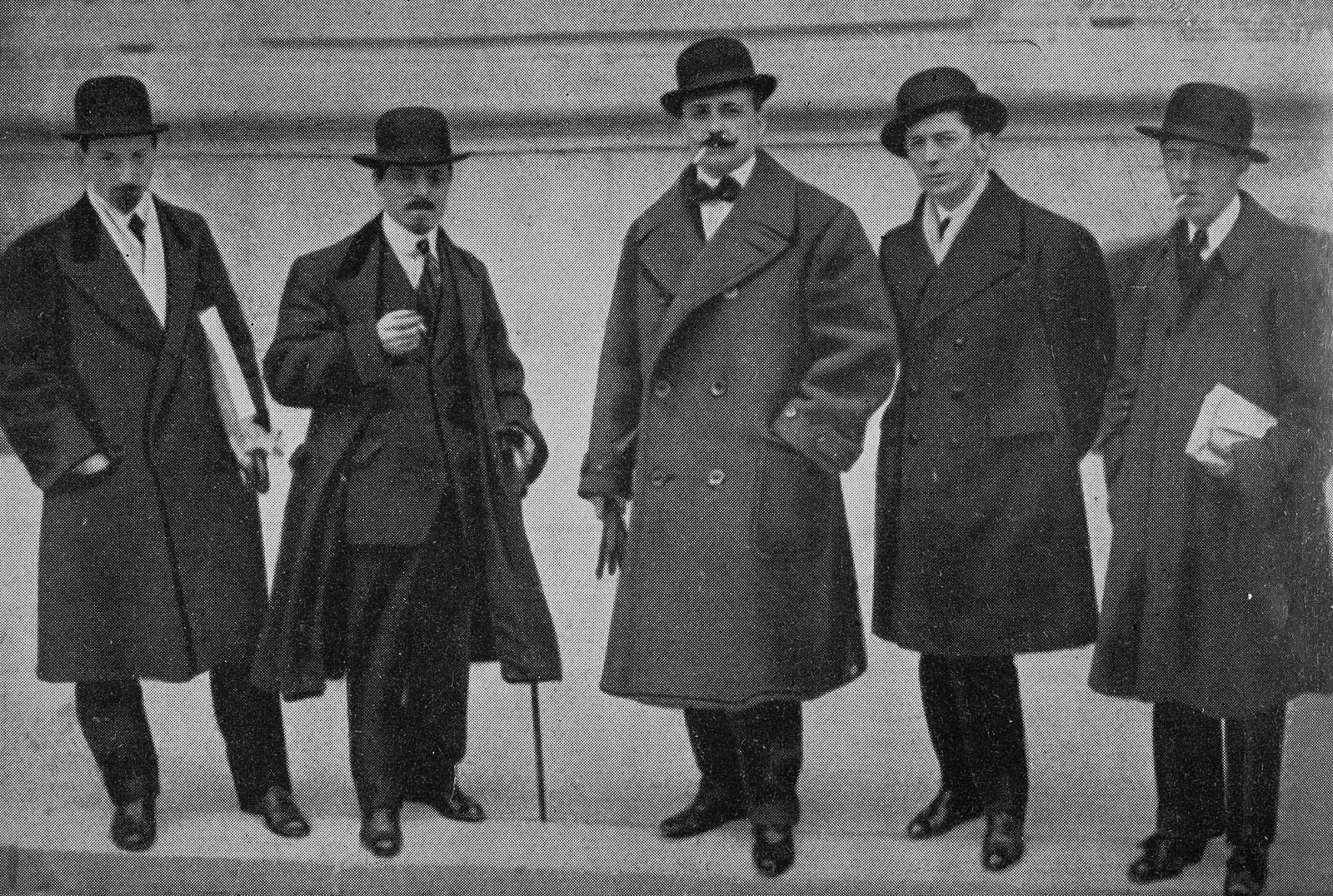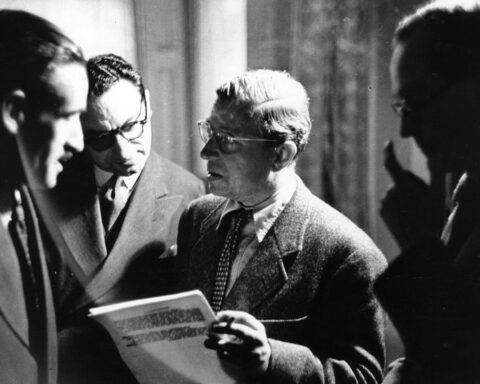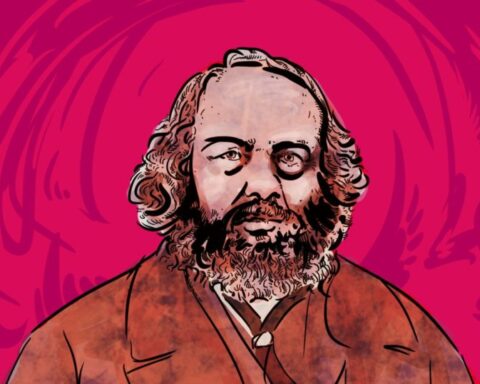The Italian Futurists praised invention, modernity, speed, and disruption. Sound familiar?
IN 1909, A poet named Filippo Marinetti was driving along in his brand new Fiat when he came across two cyclists in the road. Marinetti swerved to avoid hitting his fellow travelers, sending his car into a ditch and completely destroying the vehicle. Here’s how Marinetti described the encounter:
The words were scarcely out of my mouth when I spun my car around with the frenzy of a dog trying to bite its tail, and there, suddenly, were two cyclists coming toward me, shaking their fists, wobbling like two equally convincing but nevertheless contradictory arguments. Their stupid dilemma was blocking my way—Damn! Ouch! … I stopped short and to my disgust rolled over into a ditch with my wheels in the air …
You can already tell from this account that Marinetti was a bit of an eccentric. He was a poet, after all. And while he positions the cyclists as the issue, it’s likely that Marinetti wasn’t the safest driver. The lines that lead up to this retelling of the crash recount just how fast they were going in their car, “hurling watchdogs against doorsteps, curling them under our burning tires like collars under a flatiron.” (In case you’re wondering, yes, there was drinking that night.)
But this account of a poet’s chaotic, life-threatening drive isn’t just some strange remnant from his personal files. The crash—to him a symbol of how the old ways (bicycles) must give way to the new ones (his car)—is what propelled Marinetti to put into writing a theory of progress that he’d been ruminating on for years. The words above are actually the beginning of The Futurist Manifesto, a document that Marinetti published in 1909 with the help of a small handful of fellow Italian artists who had dubbed themselves Futurists. What follows the car crash story is a list of 11 declarations—the tenets of Futurism.

Today, when we talk about futurism, we’re not usually talking about sculpture, painting, or poetry. Futurists today are scenario builders, people with advanced degrees in strategic foresight, science fiction writers, consultants to businesses. Futurists focus largely on technology, and the field today is inextricably linked to technologists working on everything from artificial intelligence to Crispr. And today’s Futurists almost never link their work to the existence of Marinetti, and the Italian movement that came before them. This is in part because Marinetti was an artist, and the Italian Futurists worked in paint and bronze and clay, rather than future forecasts. And there is no direct link between Marinetti’s group and the strategic foresight consultants working today. But the link is also one that today’s futurists would prefer to avoid in part because of another element of the artists behind the Futurist Manifesto of 1909: Marinetti and his cohort embraced and championed fascism. There are lessons to be learned for today’s technologists and futurists in Marinetti’s manifesto, and it would be foolish to ignore them.
Let’s first take a look at the words often used to describe the Italian Futurist movement: invention, modernity, speed, industry, disruption, brash, energetic, combative. Italian Futurists were obsessed with cars and airplanes; they emphasized youth over experience; they believed that the only way to live was by pushing forward and never looking back. The first tenet in the manifesto reads, “We intend to sing the love of danger, the habit of energy and fearlessness.”
Does any of this sound familiar? Disruption? Moving fast (and perhaps breaking things)? The rejection of history? Today’s most vocal voices in tech might not communicate their values with the same aplomb as the Italian poets, but they’re often saying the same kinds of things. Here’s a quote from Anthony Levandowski, cofounder of Waymo, about the value of history: “The only thing that matters is the future. I don’t even know why we study history. It’s entertaining, I guess—the dinosaurs and the Neanderthals and the Industrial Revolution, and stuff like that. But what already happened doesn’t really matter. You don’t need to know that history to build on what they made. In technology, all that matters is tomorrow.” Here’s a quote from the 1909 manifesto: “Why should we look back, when what we want is to break down the mysterious doors of the Impossible?” Where Marinetti declares “We stand on the last promontory of the centuries!” today’s technology moguls say “the future is now.” Where the Italian Futurists were hypnotized by cars and planes, today’s technologists are drooling over rocket ships and space travel. Where Marinetti believed that women were too effeminate to bring about the kind of speedy progress he desired, former Google employee James Damore writes about how the gender gap in tech exists because men and women “biologically differ”.

Not only was Marinetti instrumental in the Futurist movement, he was also one of the artists who pushed the idea of artists as a brand. “Marinetti’s public braggadocio—and his manipulation of and engagement with the mass media—changed the way artists conceived of their relationship to the art world and popular culture,” writes Jon Mann at Artsy. Marinetti believed in the power of the manifesto, and in the idea that artists should be personas, and that they should push their narrative into the world. If Marinetti could have lived to see Elon Musk launch a red Tesla to space, he would likely have been beside himself with joy.
But Musk and his colleagues should heed the warning that the Italian Futurist movement provides. This love of disruption and progress at all costs led Marinetti and his fellow artists to construct what some call a “a church of speed and violence.” They embraced fascism, pushed aside the idea of morality, and argued that innovation must never, for any reason, be hindered. Marinetti and his movement cheered, for example, when Italy invaded Northern Africa. “Italian bombardment of Tripoli from biplanes and dirigibles was the first air bombardment in the history of the world, and thus a major technological innovation,” writes Eugene Ostashevsky. Today, some technologists praise drone warfare with similar language. “Though they painted themselves as scions of a new age, the Fascists and Futurists were really ultraconservatives ideologically,” writes Gabriel T. Rubin. Again, sound familiar? In their never-ending quest for progress at any cost, today’s companies are flirting with fascism themselves.
Amazon has been providing facial recognition software to police in the US. Hewlett Packard Enterprise, Thomson Reuters, Microsoft, and Motorola Solutions all have contracts with Immigration and Customs Enforcement ICE and are profiting off the current wave of deportations and internment camps. American scientists and technology companies are helping China track minority groups. China is also hoping Google will help it suppress any kind of information about their treatment of those minority groups. Brian Merchant at Gizmodo recently wrote about all the ways big tech companies are contributing to the current climate crisis. This is before we get into the ways that YouTube is contributing to the spread of conspiracy theories, white nationalism, and fascism.
Today’s technologists love to eschew history for the same reason the Italian Futurists did, but if they ignore the lessons contained in that movement, they’re bound to repeat it. And I’ll leave it to you to guess who said this, Marinetti or Musk: “Standing on the world’s summit we launch once again our insolent challenge to the Stars!”
________
written by Rose Eveleth, an Ideas contributor at WIRED, creator and host of Flash Forward, a podcast about possible (and not so possible) futures.
source: WIRED










